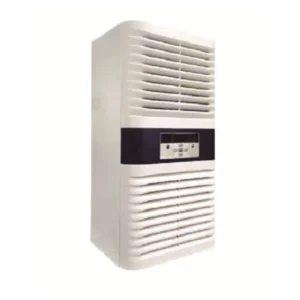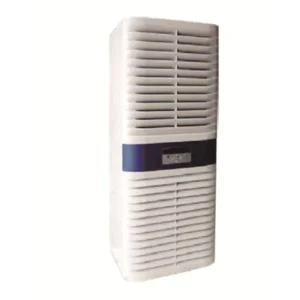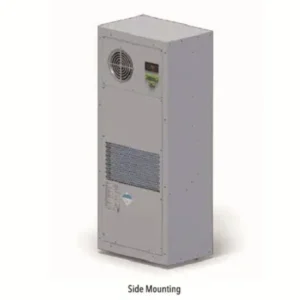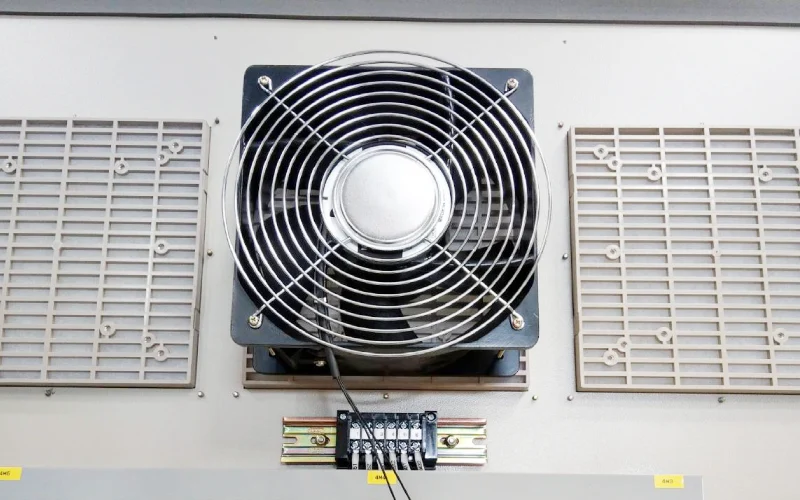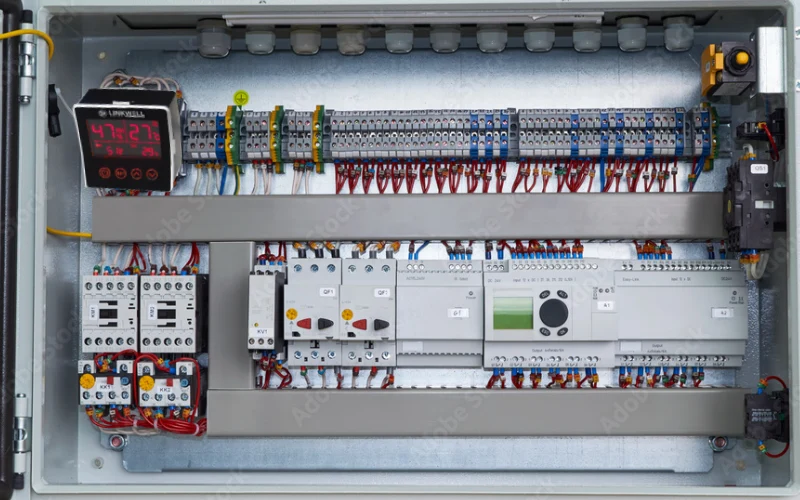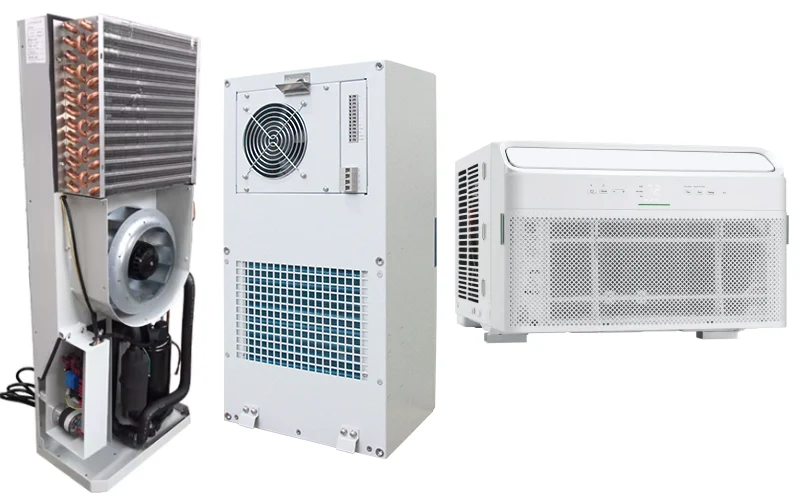A switchboard air conditioner helps regulate temperature in electrical control rooms, preventing overheating, protecting sensitive equipment, and ensuring continuous, efficient operation in industrial or commercial electrical systems.
The Critical Role of Switchboard Cooling in Reliability
Recommended products
Ever opened an electrical switchboard in the middle of summer? It’s like sticking your head into an oven. And if you’re in the manufacturing or electrical distribution game like we are, you already know how brutal that internal heat can get. Without proper cooling, your switchboard becomes a silent time bomb—one that could cause a full system failure, equipment meltdown, or even fire.
Overheating is one of the top culprits behind electrical failures in industrial facilities, especially in areas with high ambient temperatures. According to Wikipedia, most electrical devices are rated for maximum ambient temperatures around 40°C (104°F). But once you seal them inside a cabinet or enclosure, especially under load, that temperature can skyrocket past safe limits fast.
That’s where switchboard air conditioners come in. These aren’t your average AC units—they’re engineered to work in confined, sealed environments, often filled with sensitive electronics. They manage internal cabinet temperatures, reduce condensation risk, and keep components operating at peak efficiency. As a manufacturer, we’ve seen countless clients extend the life of their switchboards by 5–7 years just by installing the right air conditioning unit.
The reality? A cooled switchboard isn’t a luxury—it’s a necessity.
What is Switchboard Air Conditioner: Technical Foundations

Understanding the nuts and bolts of a switchboard air conditioner isn’t just for engineers. Whether you’re specifying for a data center, factory floor, or telecom hub, knowing how these units work helps you make smarter decisions.
Let’s break it down: there are two main types of cooling systems used in switchboard air conditioners—refrigerant-based systems and thermoelectric (Peltier) systems.
Refrigerant-Based Systems
These are your heavy-duty performers. Based on traditional vapor compression cycles, refrigerant systems use a compressor, condenser, evaporator, and an expansion valve to transfer heat from inside the switchboard to the outside. They are best suited for high-heat-load applications where internal temperatures can fluctuate wildly and need to be tightly controlled.
From our experience, industrial users like metal fabrication plants and semiconductor manufacturers swear by this method for its cooling power and reliability.
Thermoelectric (Peltier) Systems
On the other end of the spectrum are Peltier coolers—solid-state devices that use electric current to transfer heat. These are ideal for small enclosures with moderate heat loads and require less maintenance since they don’t use refrigerants or moving parts.
Our team often recommends thermoelectric units for telecom base stations and small control panels, especially in remote areas where simplicity is a big plus.
Industry Standards and Compliance
Let’s be honest: just because a unit works doesn’t mean it’s safe—or legal. In our line of work, compliance is not optional. Our air conditioners are designed in strict alignment with industry standards like ASHRAE 90.1, UL Type 4/4X, NEMA ratings, and AHRI performance testing.
ASHRAE 90.1 Requirements
This standard focuses on energy efficiency in HVAC systems, and while it’s most often discussed in commercial building design, it also informs the efficiency metrics of industrial cooling systems. We incorporate ASHRAE-approved refrigerants and high-EER designs to stay ahead of regulatory requirements.
UL/NEMA Enclosure Ratings
Every switchboard air conditioner we manufacture adheres to UL and NEMA standards. Whether it’s a NEMA 12 rating for dust-proof environments or NEMA 4X for corrosive outdoor locations, our units go through rigorous environmental testing. Why? Because in harsh industrial environments, failure just isn’t an option.
IP55 protection level(IEC 60529)
| Category | English Translation |
|---|---|
| Typical Application Scenarios of IP55 in Industrial Air Conditioners | |
| Outdoor Cabinets | Protection against rain and wind-blown sand (e.g., PV inverter cabinets, telecom base stations) |
| Dusty Environments | Prevents metal dust, fibers, etc. from entering the AC unit (e.g., foundries, wood processing workshops) |
| Humid Areas | Coastal regions or high-humidity environments to prevent condensation damage to circuits |
| Design Features of IP55 Industrial Air Conditioners | |
| Sealed Structure | Uses silicone gaskets or labyrinth design at connection points |
| Dust Filter | Removable and washable metal/synthetic fiber filters (some models support self-cleaning) |
| Drainage Design | Condensate water is discharged through drain pipes to prevent internal accumulation |
Manufacturer Perspective: Designing for Durability
We’ve been in this game for years, and if there’s one thing we’ve learned, it’s this: industrial clients value reliability above all. Our design process reflects that. Every unit starts with a customer problem, followed by detailed thermal modeling, component vetting, and life-cycle stress testing.
Components We Select
We don’t just slap together off-the-shelf parts. Our R&D team sources high-performance scroll compressors, long-life axial fans, and corrosion-resistant coils. We’ve even built our own smart controller firmware that adjusts fan speeds and compressor cycles based on load.
Testing and Validation Process
Before anything leaves our factory, it’s put through environmental chamber testing, vibration and drop tests, and MTBF simulations (mean time between failure). That’s why we’re confident offering 5-year warranties—we’ve built them to last.
We often tell our clients: “You won’t notice our units when they work right—and that’s exactly the point.”
Real-World Performance: Experience Speaks
You can run all the lab tests you want, but real-world field data? That’s where the truth lives.
We’ve shipped over 30,000 switchboard air conditioners globally, and the majority are still running smoothly after 5+ years. In fact, some of our first-generation models are still cooling away in Australian mines and Indonesian telecom towers—environments where dust, vibration, and extreme temperatures are the norm.
End-User Testimonials
Our clients—especially panel builders and automation specialists—often tell us the same thing: “We used to replace units every 18 months. Yours? They’re pushing five years, no sweat.”
One notable client, a Chinese manufacturing plant in Shenzhen, installed our units in their production control switchboards. After three summers without a single thermal shutdown, they sent us a thank-you letter. Not an email—a physical letter, signed by the entire facilities team. That’s the kind of feedback that doesn’t just validate our engineering—it drives us to keep innovating.
Warranty & After-Sales Service
Reliability doesn’t stop at the product. We provide on-site training, remote diagnostics, and real-time inventory support for our global wholesalers. And our 5-year warranty isn’t just for show—we cover parts and labor, and we actually respond within 24 hours. That’s why distributors across Asia, the Middle East, and Eastern Europe trust our systems for mission-critical deployments.
Comparative Landscape: How We Excel
In any growing industry, competition is fierce. We’ve studied our competitors—both global brands and regional players. And while many offer solid products, what sets us apart is how we combine engineering flexibility, real-world testing, and customer-driven design.
Size, Noise & Energy Efficiency
Many off-the-shelf switchboard ACs are bulky and noisy. Ours? Up to 30% smaller, 5–8 dB quieter, and rated for 20–25% lower energy use—all without sacrificing cooling performance.
We conducted independent comparisons with similar models from Europe and the U.S. and found that our energy efficiency metrics consistently met or exceeded ISO 13256-1:2021 standards, a benchmark in HVAC energy ratings.
Customization Capabilities
Whether you need a vertical mount, high-CFM version, or remote-controlled diagnostics via Modbus, we’ve got it. Our modular designs allow for over 1,200 configuration combinations without the price tag of full custom builds.
OEMs and system integrators especially love this—we become part of their workflow, not just a supplier.
Insights on Maintenance & Lifecycle
Too many people forget: even the best switchboard air conditioner needs a little TLC. Skipping preventive maintenance can turn a $1,000 unit into a $10,000 system shutdown.
Filter & Seal Care
Dust buildup is a killer. We recommend monthly visual checks and quarterly cleanings for filters. Our quick-access filter doors make that easy—no tools required. For seal integrity, we use EPDM foam rubber, which resists hardening over time and handles up to 95% humidity.
We’ve seen units in petrochemical plants continue to run without issue, simply because the customer followed a basic filter-and-seal care routine.
Monitoring and Remote Diagnostics
Our smart models come with predictive maintenance alerts. Using embedded sensors, they monitor fan RPMs, refrigerant pressure, and internal temps. If something’s off? The system flags it before it fails.
One wholesale client integrated this into their PLC network and reduced unplanned switchboard outages by 47% in the first year.
Sustainability and Future Trends
In 2025, cooling can’t just be effective—it has to be responsible. As a manufacturer, we’re committed to reducing the carbon footprint of every unit we build.
HFC Phase‑Down and Low‑GWP Refrigerants
We’re fully aligned with the Kigali Amendment and use R-513A and R-1234yf refrigerants—both with global warming potentials (GWPs) far below older HFCs like R-134a.
By 2026, we aim to transition our entire product line to low-GWP or non-flammable natural refrigerants. That’s a promise we’ve made to our clients—and to the planet.
Advancements in Vacuum & Magnetic Refrigeration
We’re currently collaborating with a university research lab on solid-state magnetic cooling. If successful, this could eliminate compressors and refrigerants altogether—cutting maintenance, energy use, and carbon emissions by over 40%.
While this tech isn’t commercially viable yet, we’ll be ready when it is.
Why Trust Us? Wholesale & End‑Customer Praise
Credibility doesn’t come from marketing—it comes from results. We’ve built strong relationships with both large distributors and end-users, and they’ve rewarded us with loyalty and transparency.
Distributor Case: Regional HVAC Supplier
A Southeast Asian distributor placed a recurring order for 800+ units per quarter, praising our fast delivery and “installation-friendly designs”. They told us, “Your switchboard ACs save our clients headaches—and that saves us from complaints.”
End-Customer Case: Data Center Operator
In a climate-controlled environment, temperature stability is king. One client, managing a tier-3 data center, said our ACs kept their PDU switchboards running within 1°C tolerance year-round. Their words: “If every supplier performed like you, we’d sleep easier.”
Practical Guide to Selecting a Switchboard AC
Whether you’re an engineer, wholesaler, or procurement manager, choosing the right unit doesn’t have to be a guessing game.
Load Calculations Made Simple
Use this formula to estimate your cooling needs:
BTU/hr = (Watts of internal components × 3.41) + Ambient heat load adjustment
Add 10–15% if your cabinet is exposed to direct sunlight or mounted near industrial equipment.
Installation Best Practices
- Mount the unit with adequate airflow clearance (minimum 6 inches).
- Avoid placing near heat exhaust sources or vibrating machinery.
- Make sure seal integrity is maintained during installation.
- Use gland plates to prevent dust ingress around cable entries.
Following these basics boosts lifespan and lowers total cost of ownership.
FAQs
Can I retrofit a switchboard air conditioner to an existing panel?
Yes, our units are retrofit-friendly with standard cutout dimensions and adaptable brackets. Installation is quick, and no major panel modifications are needed. We also provide detailed guides to help technicians integrate our AC systems into existing enclosures seamlessly and safely.
What’s the typical lifespan of your AC units?
With proper maintenance, our switchboard air conditioners typically last 5 to 7 years. Many units exceed 10 years in low-dust environments. Our durable components, corrosion-resistant coatings, and tested thermal designs ensure long-term performance, even in extreme industrial conditions.
Are your units compliant with international safety standards?
Our air conditioners meet UL, CE, and ISO certification requirements. They also comply with NEMA and IEC enclosure protection ratings, ensuring electrical safety, thermal efficiency, and environmental durability across global installations, including North America, Europe, and Asia-Pacific regions.
What happens if the power goes out?
Our smart units include automatic restart functionality with memory retention. After a power outage, the unit resumes its previous settings without manual input. Built-in surge protection also prevents damage from voltage spikes, ensuring a reliable restart every time.
Do you provide technical support globally?
Yes, we support clients in over 30 countries. Our multilingual technical team offers email, phone, and live video assistance. We also partner with regional service providers for fast, localized support and troubleshooting, ensuring prompt help wherever you’re located.
Can I control your ACs remotely?
Yes, our advanced models feature remote monitoring via Modbus, BACnet, or SNMP protocols. You can track temperature, compressor status, and error logs in real time. This allows facility managers to perform diagnostics and maintain cooling systems efficiently from any location.
Conclusion
When you choose a switchboard air conditioner, you’re not just picking a cooling unit—you’re protecting your operation. From the smallest telecom node to massive electrical substations, thermal stability is non-negotiable.
At our core, we’re not just manufacturers—we’re problem-solvers, engineers, and partners. We’ve poured our experience, our client feedback, and our obsession with quality into every unit we produce.
So whether you’re specifying for an upcoming project or looking to upgrade legacy systems, remember this: a reliable switchboard air conditioner doesn’t just cool. It prevents disaster, extends component life, and protects your bottom line.

